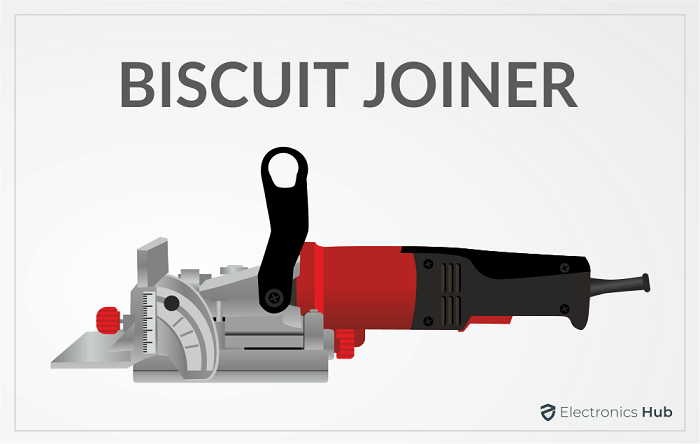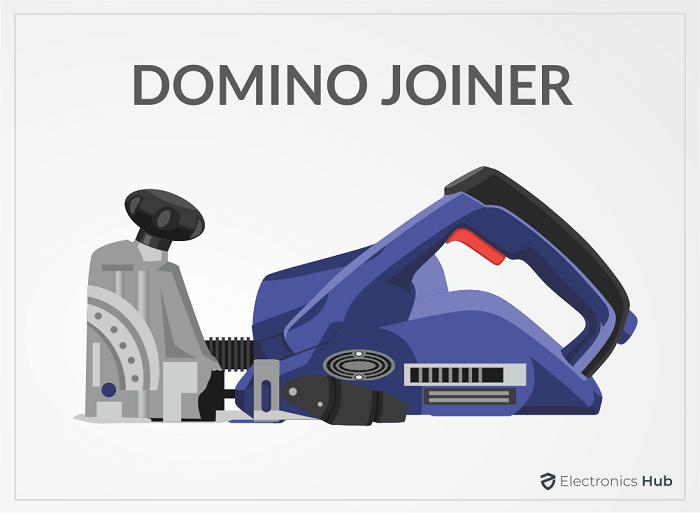Outline
ToggleWhat Is a Biscuit Joiner?
A biscuit joiner is a tool that lets you use it for different projects. It comes with a rotating blade that has a spring-loaded system. Biscuit joinery can be great for sheet wood. It features elongated and flat flies cut into both boards. Both slots are applied with glue and biscuit so that there will be a sturdy connection.
Even though biscuit joiners are highly popular, they have limited applications. It does not have much strength as the biscuits are quite thin and can break. Their most preferred application is for joining two large boards together.
Biscuit Joiner Pros and Cons
Pros
- Does not require metric measurements.
- Optional dust collection.
- Requires less setup accuracy.
- Works faster than a domino.
- It is much cheaper compared to domino.
Cons
- Suitable only for wood surfaces with a contact space of 1-1/2-inch.
- Unable to make curved biscuit joints.
- Has a shallow joint depth.
- Comes with just a single thickness.
- Weaker than a domino joint.
What Is a Domino Joiner?
A domino joiner is a powerful tool that allows you to make floating tenon joints. It is a mortise and tenon joint that is made by cutting two matching wood slots and inserting the tenon. Domino joiner features a spinning cutter just like the drill bit. However, it can make both up and down and sideways motions. Using a domino joiner can cut a full mortise in one stroke.
Domino joiners are made by a German-based company called Festool. The tenons are known as dominos. Compared to a traditional biscuit, the tenon is stronger and thicker. The tool serves ideal for professional woodworkers who are constantly into building a lot of furniture. Their only downside is that they have a higher cost than a biscuit joiner.
Domino Joiner Pros and Cons
Pros
- Perfect for corner joints.
- Allows cross-stop setup for indexed and repeated cuts.
- Option for support bracket to deal with vertical cuts.
- Simple dial for controlling the width.
- Handrail fence for curved or round materials.
- Perfect alignment with trim stop setup.
- Varying tenon thickness due to interchangeable bits.
Cons
- It has a higher learning curve compared to a biscuit joiner.
- It has only one manufacturer.
- Comes only with metric measurements.
- The cost is much higher than a biscuit joiner.
Domino Joiner vs Biscuit Joiner
Here are the main differences between a domino joiner and a biscuit joiner.
Biscuits are composite wood that comes in an oblong shape. They are suitable only for interior purposes. A biscuit joint is for fixed biscuit spline thickness. It is then inserted and glued by the biscuit joiner.
A domino utilizes mortise and tenon of different widths and thicknesses. The holes left by the tool are mortise. The wood pieces are called tenons. Tenons can be either mahogany or beech and are suitable for both interior and exterior projects.
Key Features of a Biscuit Joiner
These are the main features of a biscuit joiner.
- A biscuit joiner is made by different manufacturers and can have a variety of features.
- It allows cutting biscuits at different angles as the fence tilts up to 90 degrees.
- Higher-end models feature aluminum fences for clamping them while using.
- Easy left to right alignment with rack and pinion fences.
- The tool can cut 20 mm adjustable depth.
- It can cut biscuits of 0, 10, and 20 sizes.
- One can easily choose from corded or cordless power options.
- Some models come with foot-activated or handheld designs.
- Comes in four sizes for accommodating wide and narrow materials.
Key Features of a Festool Domino Joiner
- The main features of a Festool Domino joiner are as follows.
- Easy to use with portable handheld mortising.
- Comes with dust collection.
- Quick and accurate adjustments.
- Optional jig for indexed mortises.
- Allows mortising in semi-circular or round stock.
- Suitable for different projects due to varying tenon thickness and width.
The different aspects of the two tools are as follows.
- Even though DOMINO is a powerful tool, both the tools come with their own strengths.
- For cabinet face frames, a domino can be great. However, there will be no sideways torque. For this reason, a biscuit serves as the perfect choice.
- The price of a DOMINO is an important consideration. Most prefer a biscuit joiner as they are affordable.
1. Tool Specs
Now let’s compare the tool specs between the Festool DOMINO DF 500 and Makita PJ7000 Plate Joiner. The DF 500 weighs 7 pounds and its size is 15.5 x 11.5 x 6.4 inches. PJ7000 has a weight of 12 pounds and the size is 7.87 x 19.49 x 10.24 inches. Both can be easier to handle due to their lightweight structure.
When it comes to spindle speed, the DF500 has a speed of 23,400 RPM. The PJ7000 rotates at 11,000 RPM. Even though that’s a major difference, they both feature adjustable fences. Both tools enable easy slots and angles.
If we discuss the power consumption, the PJ7000 has a 5.6 AMP motor and requires 7000 watts. On the contrary, the DF 500 needs 420 watts. So when it comes to efficiency, the DF 500 can be a better choice.
2. Strength and Alignment
Both domino joiners and plate joiners are similar to dowel joints. One lets you use it for making floating tenon joints, the other for biscuit joints. However, the difference is the dimensions and shape of the tenon/biscuit and slot.
As a floating tenon is very strong, it has better strength compared to biscuit joints. A floating tenon also has good torsion making it great for different purposes. But for a narrower field of applications, biscuit joints are great.
As far as alignment is concerned, biscuits are for putting boards in place for joining them. However, they are not that accurate, and there will always be some room left. Dominos are precise and have better accuracy than biscuit joints. As the tenons can fit perfectly, dominos are suitable for alignment purposes. The dimensions and tenons price make it rare to use domino joints for alignment.
3. Tenons vs Biscuits
The shape of domino tenons is very much similar to dowels. However, the cross-section is different. Biscuits are placed horizontally as they are oval-shaped. When it comes to dimensions, both tenons and biscuits come in varying dimensions. The DF500 has 6 tenon sizes ranging from 4 to 10 mm thickness. Even biscuit sizes are FF, 0, 10, and 20. The biggest biscuit size is 20 which is 56 x 23 x 4 mm.
Tenons are very solid as they are made of beech hardwood. Biscuits on the other hand are composed of compressed wood. If we talk about the price, dominos tend to be more expensive than biscuits as they are made from natural wood. They are directly produced by Festool.
4. Noise and Dust
When using both tools for cutting, they can make a lot of noise. For this reason, ear protection is recommended. Also, both tools produce a lot of dust. One of the greatest things about the tools is that they can have a kind of dust extraction system. Biscuit joiners feature a simple bag for collecting dust. Domino joiners have to go deep with fast rotation. There will be chances of overheating. Thankfully, the dust extraction system can easily be connected by using an adapter.
Conclusion
We had a look at the features and functionalities of biscuit joiner and domino joiner. Festool domino joiner is for strong and durable joints. With the domino joiner, there will be a higher risk of misalignment. However, a biscuit joiner is cheaper and features a simple angle grinder. They have their own pros and cons. Getting the right one is a user preference and one needs to see if the tool serves the purpose.



